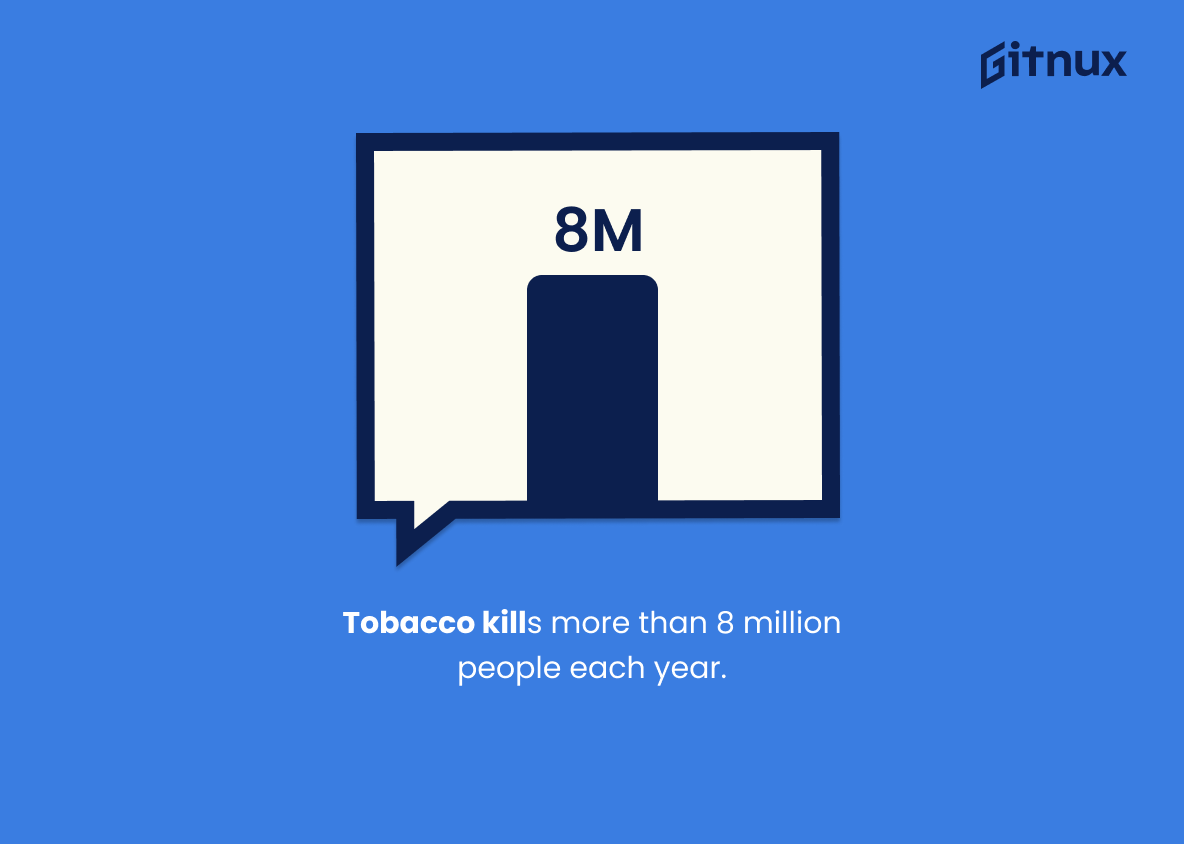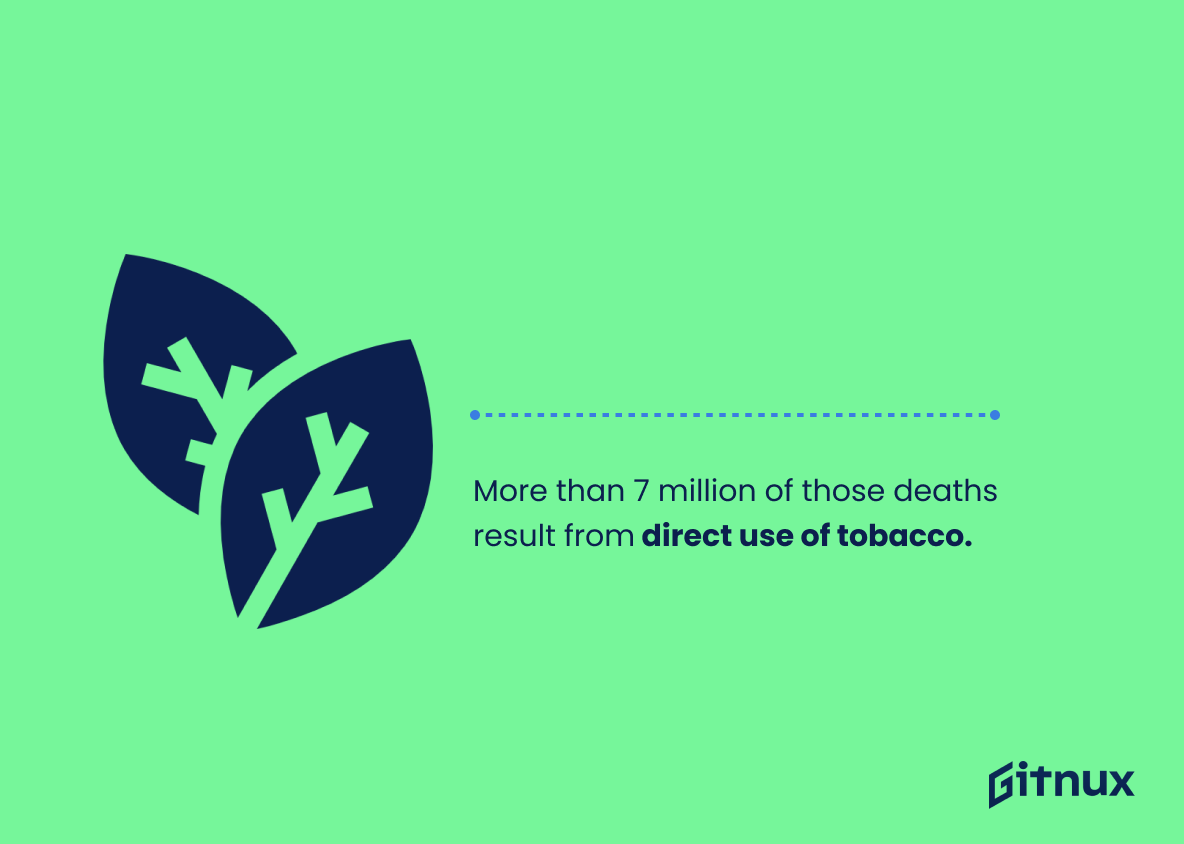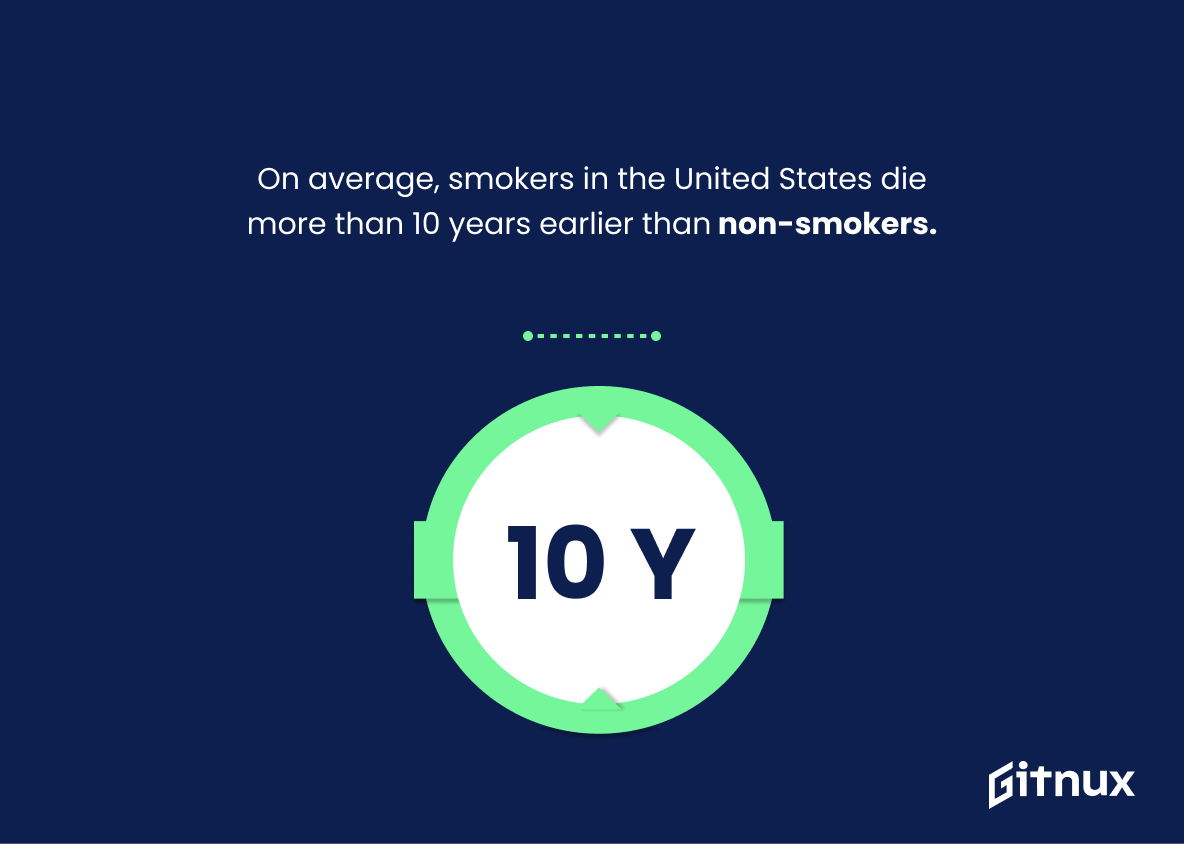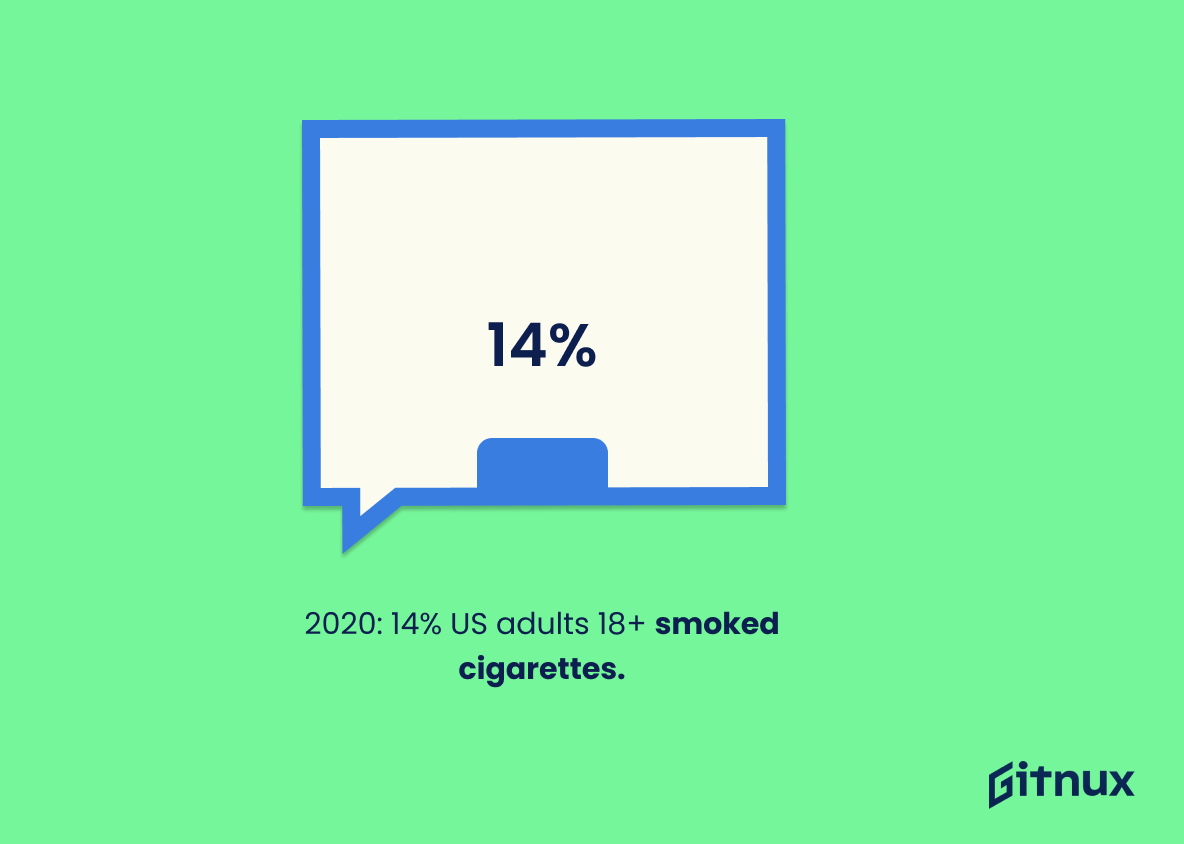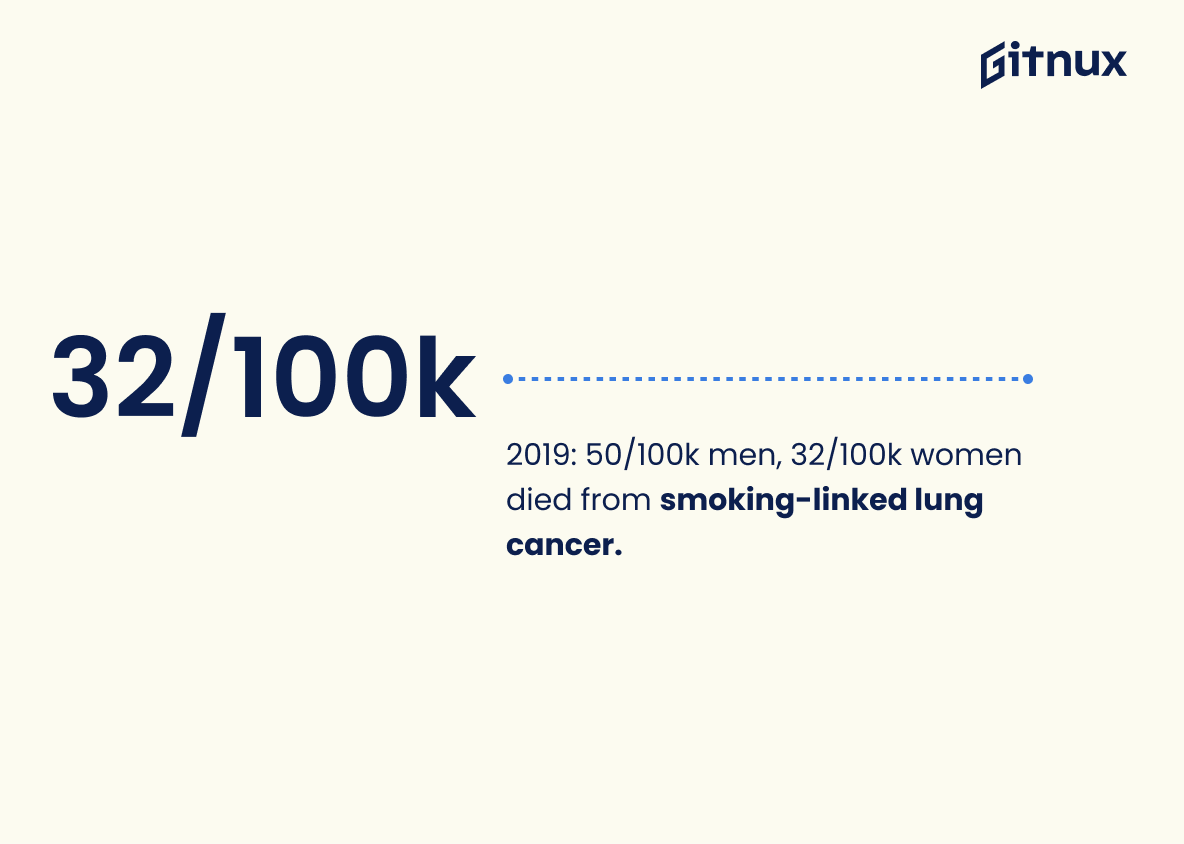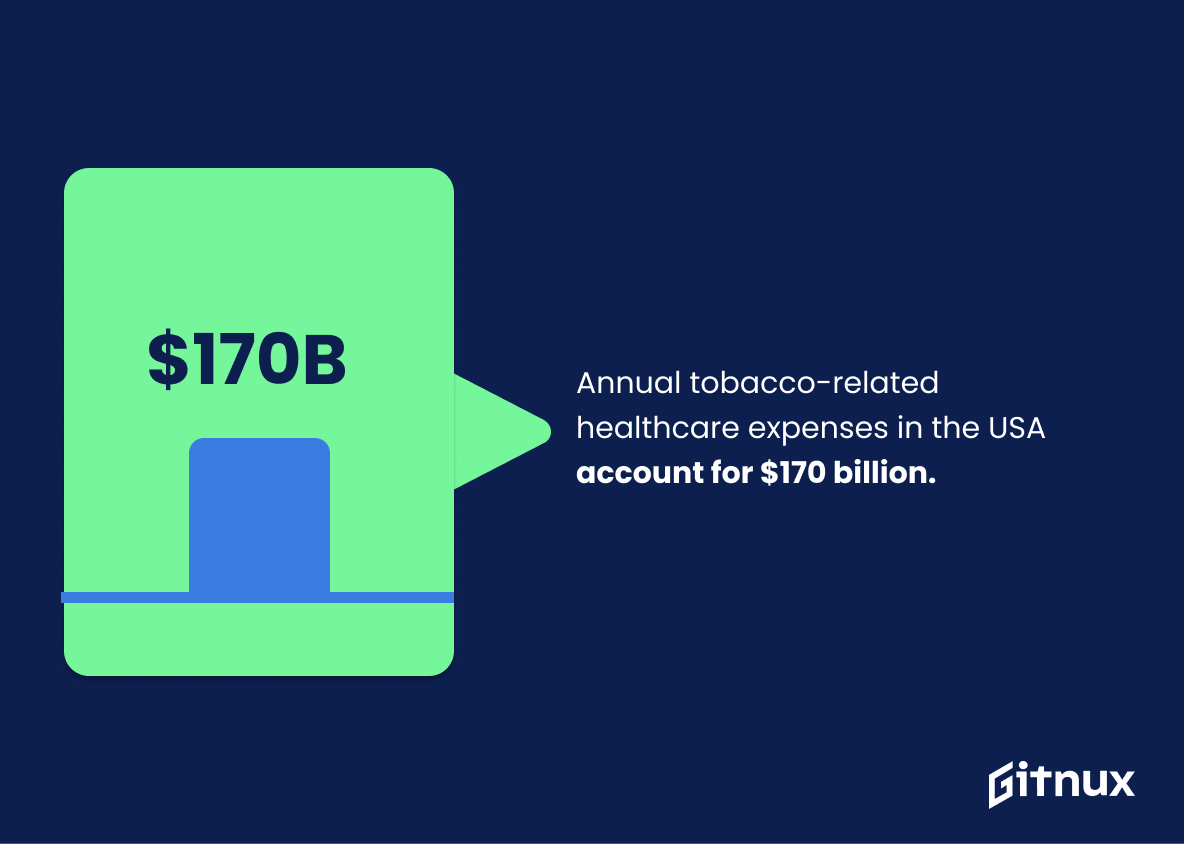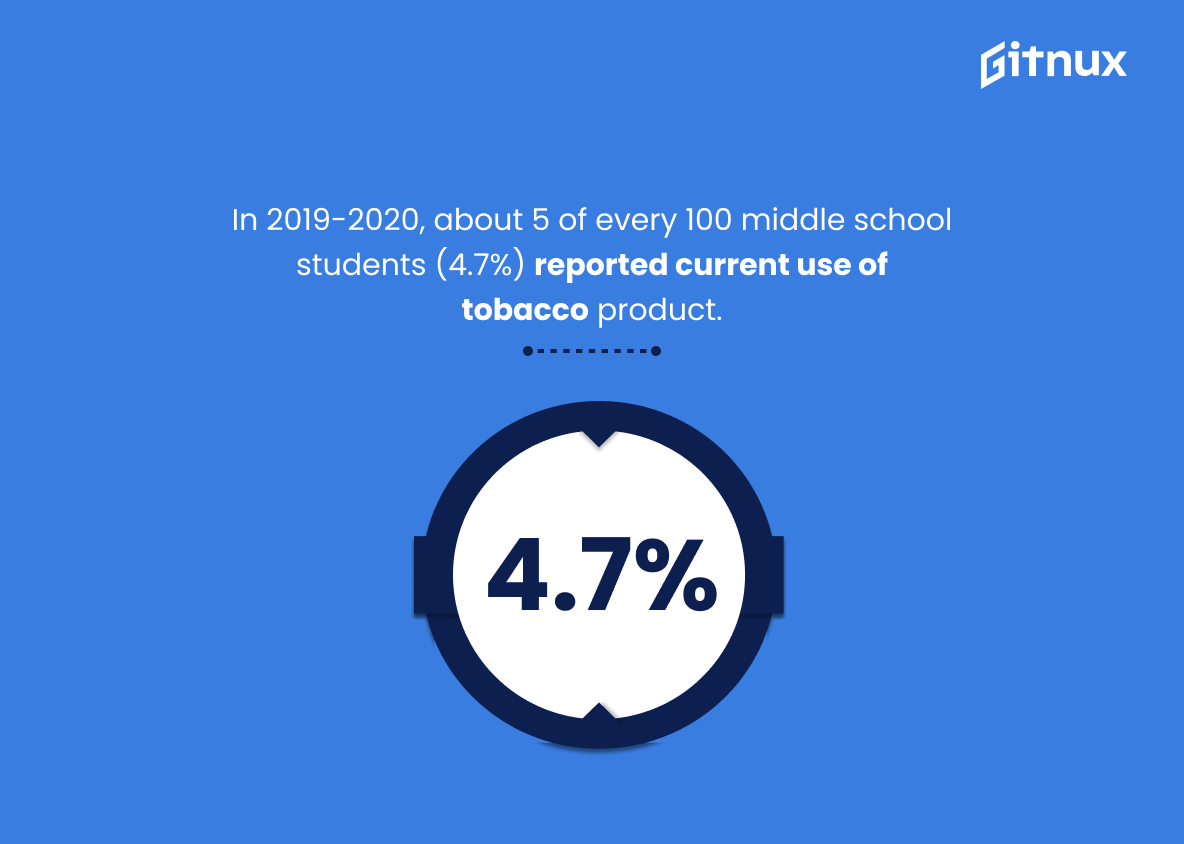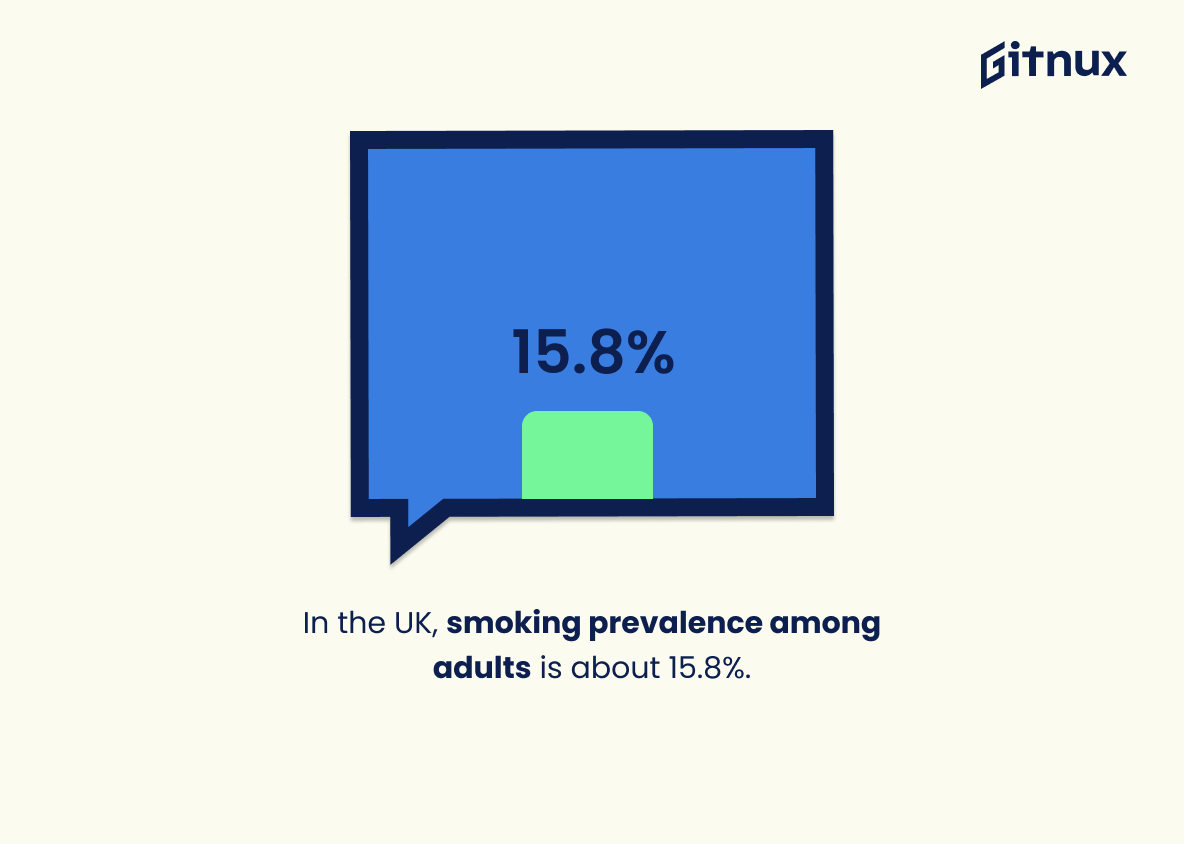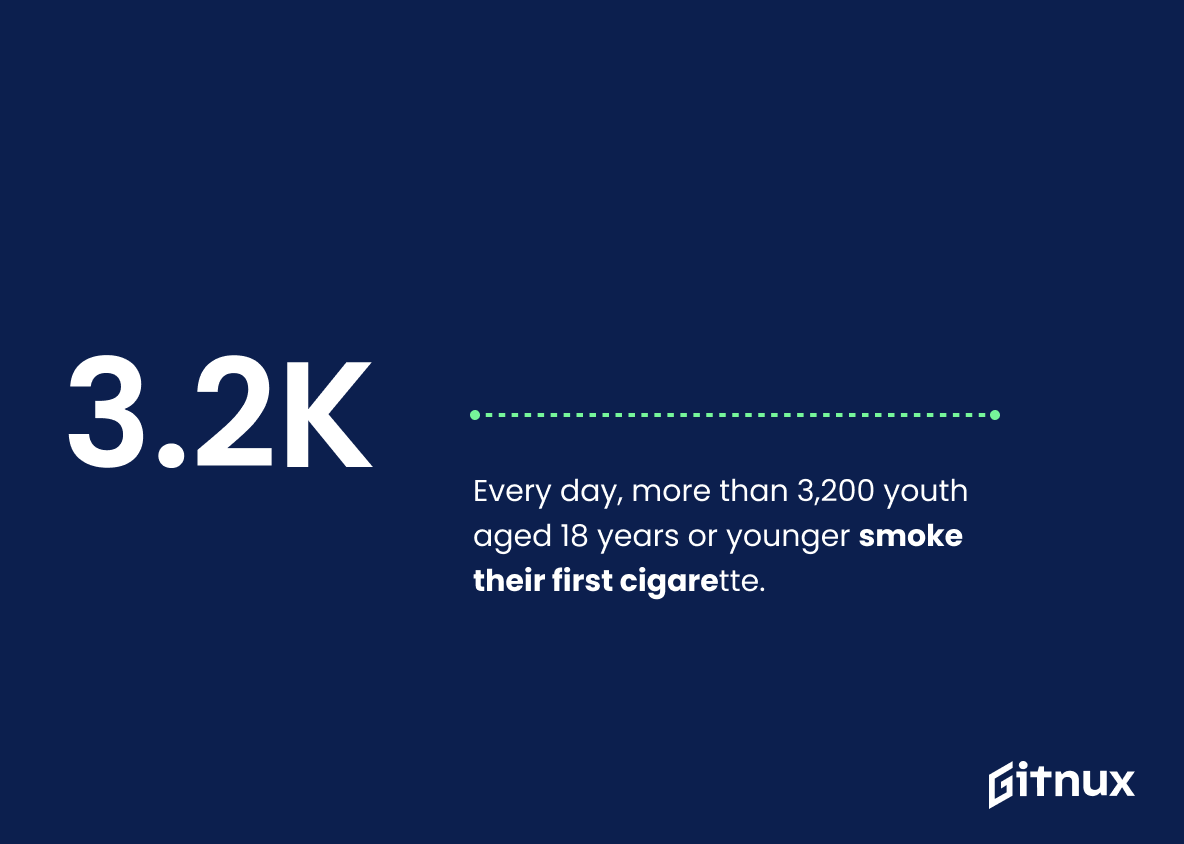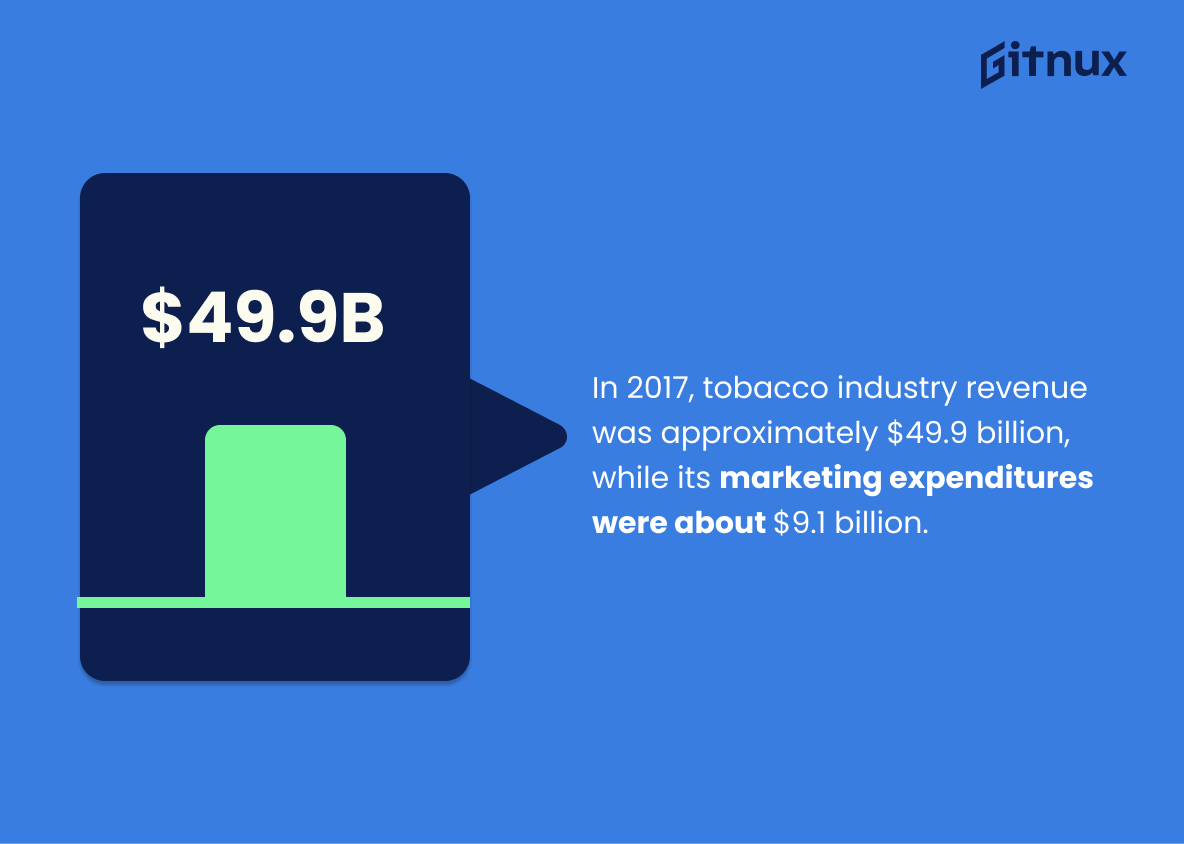An in-depth understanding of tobacco usage is essential in acknowledging its impact on global health scenarios. Tobacco, a life-threatening agent, boasts a significant presence worldwide and is one of the leading causes of preventable diseases and premature death. This blog post delves into the harrowing world of tobacco, providing comprehensive statistics that shed light on the prevalence, health implications, and trends in tobacco consumption. For policymakers, healthcare professionals, or individuals hoping to quit smoking, these figures offer an eye-opening perspective and an impetus for change.
The Latest Tobacco Statistics Unveiled
Approximately 1.3 billion people globally are tobacco users.
Navigating the dense fog of global tobacco consumption, we stumble upon a staggering number – approximately 1.3 billion people around the world are tobacco users. Think about it – that’s more than one-seventh of the entire planetary population. This enormous figure, as unnerving as it might be, brilliantly illustrates the gravitas, scale, and reach of the tobacco problem. In fact, by relating this statistic to our blog post about Tobacco Statistics, we can better comprehend the urgency for effective prevention strategies, more comprehensive public awareness programs, as well as robust legislative and regulatory actions. This figure not only highlights the prevalence of tobacco use, but also underscores the potential economic, social, and health impacts that are rippling across borders and cultures globally. With every billion, million, or even one person counted in this statistic, it reiterates a silent cry for action, magnifying the challenge, and motivating us to join the fight against the tobacco menace.
Tobacco kills more than 8 million people each year.
This staggering statistic serves as a grim clarion call to the devastating impact of tobacco on humanity, annihilating over 8 million lives each year. In the realm of blog post about Tobacco Statistics, it underscores the urgency of the matter, unmasking the seemingly invisible enemy within our society. Each digit in that 8 million is not just a number, but represents an individual – someone’s parent, child, or friend, which magnifies the gravity of the situation. Hence, this remarkable figure forms the backbone of our discussion, leading us to delve deeper into the perils of tobacco usage and contemplate effective countermeasures.
More than 7 million of those deaths result from direct use of tobacco.
Highlighting the statistic – “More than 7 million of those deaths result from direct use of tobacco” casts a glaring spotlight on the perilous epidemic of tobacco use that is creeping like a fatal shadow globally. The numeric representation is not just a number, it is a grim testament to the lives snuffed out prematurely, reflecting personal tragedies, diminishing families, and leaving indelible marks on communities. In a blog post around tobacco statistics, this chilling fact serves to infuse a sense of urgent realism, reinforcing the severity of the issue, and underscoring the pressing need for comprehensive interventions to tackle this public health crisis.
An estimated 600,000 non-smokers die each year from secondhand smoke exposure.
In the vivid tableau of Tobacco Statistics, the grim figure of secondhand smoke fatalities serves as a poignant, silent scream. An estimated 600,000 non-smokers take their premature leave from this world each year, their lives snuffed out not by their own choices but by the tobacco addiction of those around them. These silent victims, who likely never purchased a packet of cigarettes, breathe life into our understanding of the insidious, all-pervasive dangers of tobacco. Their untold story underscores the dire importance of robust policies and impactful public health interventions to curb tobacco use, protect innocent bystanders, and prevent these unnecessary deaths. Indeed, the statistic of these non-smoker deaths is not merely a number; it’s a clarion call for collective action against the communal foe—tobacco.
On average, smokers in the United States die more than 10 years earlier than non-smokers.
Highlighting the statistic that American smokers on average face a premature death of over 10 years compared to non-smokers paints a stark image of the severe health implications associated with smoking. In a blog post about Tobacco Statistics, this chilling fact acts as a vivid brushstroke in the broader canvas of tobacco’s detrimental effects.
This piece of data sets a serious tone, serving as a poignant reminder of the dire consequences tied to smoking. It speaks louder than simple percentages or numbers; it conveys an alarming lifetime cost that can neither be quantified nor recovered — lost years of life and experiences.
Furthermore, it offers readers a compelling perspective on the long term impact of smoking, allowing them to connect with the issue more personally and profoundly. Making the connection between a decade of someone’s life and tobacco use takes the discussion from abstract risks to concrete life-and-death stakes.
Tobacco use is the leading cause of preventable disease and death in the United States.
As we navigate the murky waters of tobacco statistics, one startling fact rears its head like a towering tsunami. Tobacco use has clinched the dubious honor of being America’s top agent of preventable disease and death. This stark reality acts as the proverbial canary in the coal mine, sending us an urgent message about the often-underestimated impacts of tobacco use on American public health. Reflect on this data point as a piercing siren call, serving as a stark reminder to keep tobacco conversations, education, and preventative measures at the forefront of national health discussions.
In 2020, nearly 14 of every 100 U.S. adults aged 18 years or older (14.0%) currently smoked cigarettes.
Highlighting the statistic that in 2020, approximately 14% of U.S. adults aged 18 years or older were current cigarette smokers offers a stark illumination of the enduring impact of tobacco use in our society. As we delve into a meticulous analysis of tobacco statistics, this information creates an important scaffold for our conversation, sketching a clear and recent snapshot of adult tobacco consumption.
This figure serves not just as a sample of raw data, but as a critical indicator of the scope and scale of cigarette smoking among U.S. adults. By understanding the prevalence of tobacco use, we are better equipped to evaluate the effectiveness of public health campaigns, regulatory interventions, and cessation supports. Moreover, it can compel us to investigate the societal, economic, and health impacts of tobacco use and identify areas where additional resources or intervention may be needed.
In unraveling the story of tobacco use, we must appreciate the characters, plots, and nuances – with statistics like this one serving as an essential chapter in the narrative. An understanding of this data can underscore the urgency and importance of continued efforts to reduce tobacco consumption and highlight progress made or challenges yet to be overcome.
In 2019, nearly 50 of every 100,000 men and about 32 of every 100,000 women died of lung cancer caused by smoking.
Unmasking the stark reality of tobacco’s impact, the data revealed in 2019 shows a chilling portrait of the consequences of smoking. It’s striking to note that nearly 50 out of 100,000 men and approximately 32 out of every 100,000 women met their untimely demise due to lung cancer induced by smoking. This signifies the grave proportion this preventable cause of death holds within our society.
Adding another layer to this narrative, the differential rates between men and women paint a gender-specific perspective on tobacco’s devastation, potentially steering us to diagnose why such discrepancy exists. Adding these figures to a blog post about Tobacco Statistics serves as a potent alarm bell, underscoring the urgency of effective anti-smoking campaigns and policies. It directs the spotlight on the deadly game of Russian roulette smoking entails – a risky gamble where losing means paying with one’s life.
Annual tobacco-related healthcare expenses in the USA account for $170 billion.
Imagine the significance of an immense mountain, its peak disappearing into the clouds – that visualizes the colossal nature of $170 billion, the annual spending on tobacco-related healthcare in the USA. In quantifying the financial impact, the magnitude of this figure shakes the very core of our understanding of the cost we bear in our economy due to tobacco consumption. In the realm of a blog post about Tobacco Statistics, this figure exposes the fiscal severity linked with tobacco use. It illuminates the grim reality that even after years of raised awareness, the crushing weight of tobacco-induced health issues continues to draw vast resources, straining our healthcare system. With every dollar spent on treating tobacco-induced disease, we are reminded of lost opportunities to invest these millions in areas like education or infrastructure. This monetary manifestation of the tobacco crisis is a stark reminder of the crucial need for effective prevention and intervention strategies.
In 2019-2020, about 5 of every 100 middle school students (4.7%) reported current use of tobacco product.
Shedding light on the infamous reality of tobacco consumption, the cited statistic – 4.7% of middle school students using tobacco in 2019-2020 – kick-starts an urgent conversation. It brings into focus the need for our society to sit up and pay attention. Especially startling is how early the addiction starts, infiltrating the innocence of middle school students undoubtedly raises concerns about long-term health effects as they evolve into adulthood. The frequency, ‘5 in every 100’, amplifies the immediacy, revealing it’s not an isolated issue but a rather widespread one. Tailoring preventative measures, education programs, and policies for this demographic could be crucial if these are the tender roots from which a health damaging habit is sprouting. This statistic, therefore, is a potent call to arms, nudging us to rise against tobacco consumption amongst the most vulnerable—the children.
Tobacco farming accounts for 2% of all male and 5% of all female child labor worldwide.
Peeling back the leafy layers of the tobacco industry reveals a raw and concerning truth – children as young as five toil away in tobacco farming, enslaved by an inescapable cycle of poverty and exploitation. In fact, an astonishing 2% of all male and 5% of all female child labor worldwide is rooted in tobacco farming. This unveils a haunting image of the hidden cost that the tobacco industry exacts.
It becomes not just a picture about the hazards of smoking or economic revenues, but a grim narrative around social justice and child rights. A statistical glance at gender differences further intensifies this grim picture. The higher percentage of female child laborers ensnared in tobacco farming elucidates an additional, gender-based dimension of vulnerability.
Idealistically, each puff we take should come with not just a health warning, but also a stark reminder of the innocents whose childhood has been immolated in the fields of tobacco farming. Thus, by unraveling these statistics, we shed light on the grave human rights issues entangled in the vines of the tobacco industry, catalyzing urgent conversations and actions towards fair and child labor-free practices.
In the UK, smoking prevalence among adults is about 15.8%.
Depicting the current landscape of tobacco consumption, the statistic that 15.8% of the UK adult population smoke throws in sharp relief the scale of the challenge that healthcare professionals, public policy makers, and anti-smoking campaigners continue to face. This figure, while seemingly just a number, is actually a crucial signpost that illuminates the breadth and depth of tobacco use within the UK. It has profound implications: every percentage point represents thousands of people risking grave health consequences, expensive medical treatments and potential socioeconomic side effects. Therefore, this percentage, as it rises or falls, serves as a key barometer to assess the effectiveness of health campaigns, enact appropriate public policies, and fine‐tune our approach to reducing tobacco usage and supporting smokers to quit.
Every day, more than 3,200 youth aged 18 years or younger smoke their first cigarette.
Visualize this — the flame flickering as a matchstick strikes against a surface, the spark setting alight a slender cylindrical stick, and a young hand inhaling their inaugural puff; this isn’t just one hand but, stunningly, over 3,200 underage hands, every single day. This alarming datum, a cornerstone in the architecture of Tobacco Statistics, not just shockingly measures the colossal scale of juvenile initiation into tobacco use, but also predicts a foreboding future. Woven into this figuration is a quietly brewing storm; it undeniably underscores the impending burden on healthcare systems, amplifies the challenges faced by anti-smoking campaigns, and begets a haunting scene of insidious addiction and potential health devastation among the youth. Such a statistic, directly webbed into the fabric of tobacco implications, serves as a stark alarm bell, magnifying the immediacy for robust mechanisms to effectively curb this epidemic.
In 2017, tobacco industry revenue was approximately $49.9 billion, while its marketing expenditures were about $9.1 billion.
The enormity of these figures drawn from 2017, help shed light on the fiscal veins of the tobacco industry. Given that its revenue stacked up to an astounding $49.9 billion alongside a colossal marketing budget of around $9.1 billion, it underscores the significant economic generator this industry is. This high-scale investment in marketing, suggests an aggressive strategy to promote tobacco products, which are known to have noteworthy health implications. Hence, providing viewpoints on the sheer scope of this industry, its financial maneuvers, and ultimately the influence it wields over consumers, is imperative in discussions revolving around Tobacco Statistics.
Conclusion
In conclusion, the evidence presented by various tobacco statistics is both shocking and enlightening. It underscores the severe implications of tobacco use, both on individual health and global economy. While strides have been made in reducing tobacco usage through regulations and public awareness campaigns, the numbers make it clear that there’s still a long way to go. It is imperative that we continue working toward strategies and policies that discourage tobacco use and safeguard public health. These statistics serve as sobering reminders of the urgent necessity of collective action in battling this global health issue.
References
0. – https://www.www.ons.gov.uk
1. – https://www.www.ncbi.nlm.nih.gov
2. – https://www.www.cdc.gov
3. – https://www.www.cancer.gov
4. – https://www.www.surgeongeneral.gov
5. – https://www.truthinitiative.org
6. – https://www.www.who.int

